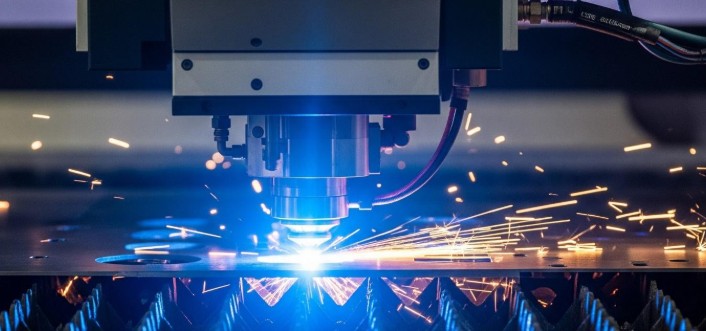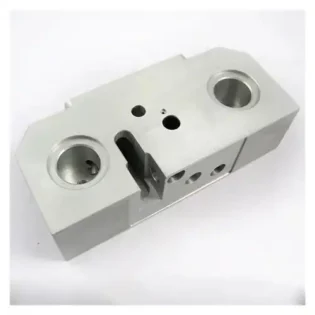
They cut materials with high precision. Be it metal, non-metal, or non-ferrous materials, they can transform them easily into the shapes you desire. But laser cutting is not limited to a single type. Instead, you can see varieties suitable for different materials and applications.
The question is, which suits your business or industry? We are here to answer your question with a guide to the different types of laser cutting ideal for your tasks.?
What are the Different Kinds of Laser Cutting?
With so many types of laser cutting, it can be difficult to identify the right one for your task. Each laser cutting method is suitable for different materials and applications. Understanding how each method works will give you deeper insight and help you choose the right one for your needs.
Fiber Laser Cutting
You might have noticed engraved serial numbers or logos in cars. Have you ever wondered how it is done precisely? The pro behind the job is fiber laser cutting. Not only just those serial numbers, but also from cutting engine components in automobiles, marking turbine blades in aeroplanes, customizing electronics, etching circuit boards, to creating jewelry, and more, fiber laser cutting has always played a major role.
How does it work? It uses optical fibers and generates a highly concentrated laser beam that works with computer numerical control (CNC). The laser beam is directed at a material to slice through it with high accuracy to convert it into desired shapes.?
You can either cut metallic or non-metallic materials like stainless steel, copper, aluminum, titanium, mild steel, and various alloys using these fiber lasers.
Pros?
- Help complete high-volume production within a short time?
- Create extremely precise and accurate cuts using a fiber laser cutting machine
- Consumes a low amount of energy while providing high-quality outcomes
- Adapts to cutting different types of materials and handles any projects
- Produces no waste material and significantly reduces expenses
Cons
- In rare cases, poor ventilation can cause fumes, potentially harming the operator while causing damage
- Complexity requires more training than any other type.
CO2 Laser Cutting
CO2 laser cutting, also known as carbon dioxide laser, is a popular laser cutting type. This is not similar to other types because it generates and directs in a way that’s completely different from the others.
It uses both electricity and a gas mixture of carbon dioxide and generates high-intensity infrared light. With many lenses and mirrors, it directs and focuses on the material, changing it into desired shapes.
Although it can be used for either metal or non-metal surfaces, it is best for cutting non-metallic materials like wood, leather, fabric, paper, plastic, rubber, and more.?
Pros?
- Cuts with high precision and offers intricate features
- Works at high production speed to cut thinner materials
- Offers high overall efficiency and typically consumes less power.
- Minimizes waste cleanup that’s in the form of dust.
Cons
- May emit harmful fumes when cutting highly reflective materials
- May find it hard to cut materials that are above a certain thickness
- Creates a heat-affected zone with high heat input that may alter nearby material properties
Direct Diode Laser Cutting
This is also known as a laser diode. It transforms electrical energy into coherent light energy, with a focused and monochromatic beam of light. This compact device uses semiconductor materials to generate laser light. It relies on it as an active medium and so known as energy efficient and cost-effective.
They cut non-metallic materials like plywood, MDF sheets, Bamboo, Oak, laser board, and more. Moreover, this is best for personal use, more than for complex work.
Pros
- Compact and more cost-effective than fiber and CO2 lasers
- Available in a wide range of wavelengths to cut many suitable materials
Cons
- Not suitable for all applications due to the rectangular beam spot size
- Poor absorption rates can pose complications during medical applications.
Nd: YAG/Nd: YVO Laser Cutting
Nd:YAG is Neodymium-doped Yttrium Aluminum Garnet, and Nd:YVO is Neodymium-doped Yttrium Orthovanadate. The Nd:YAG, a synthetic crystal, produces a laser beam with a wavelength of 1.06 micrometers, approximately.? And Nd:YVO works similarly but uses a slightly different crystal composition.
It has high cutting power and can be used for a wide range of applications. It can be used to work on metals (coated and non-coated) as well as non-metallic materials like plastics. They are better at handling reflective materials.
Pros
- Operates continuously throughout the process
- Cuts a wide range of materials, including powder-coated materials
- Cuts even through thick materials
Cons
- Costly purchasing and setting up
- Relies on pump diodes that are expensive to replace
- Less serviceable than other types of laser cutters
??züm
People use laser cutting to cut materials easily in precise shapes and designs. But which one suits you is more important to consider. These lasers can be of many types; among them, you need to consider a few things before purchasing. There are a few factors, like precision, quality, thickness, speed, and cost, to analyze so that you can make your decision on purchasing the right type.?








